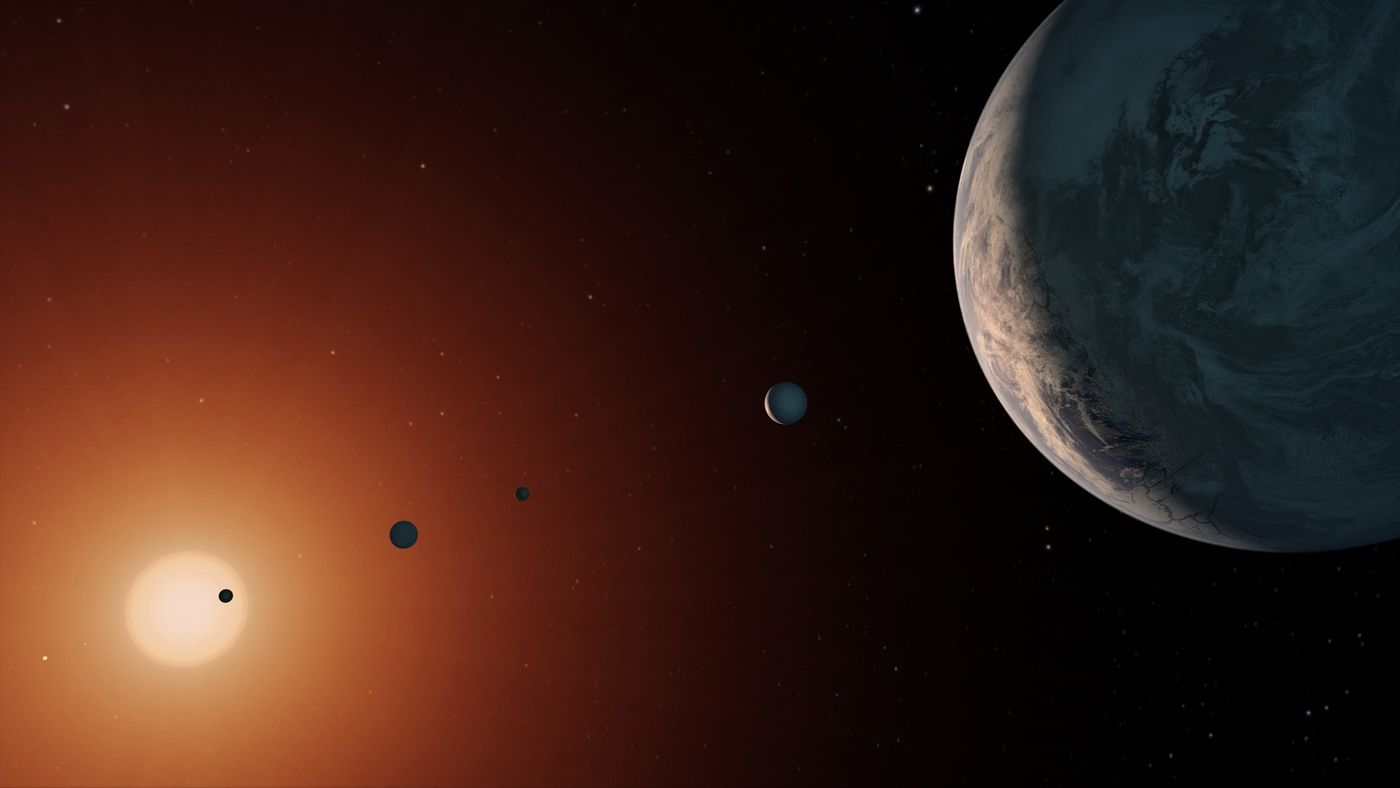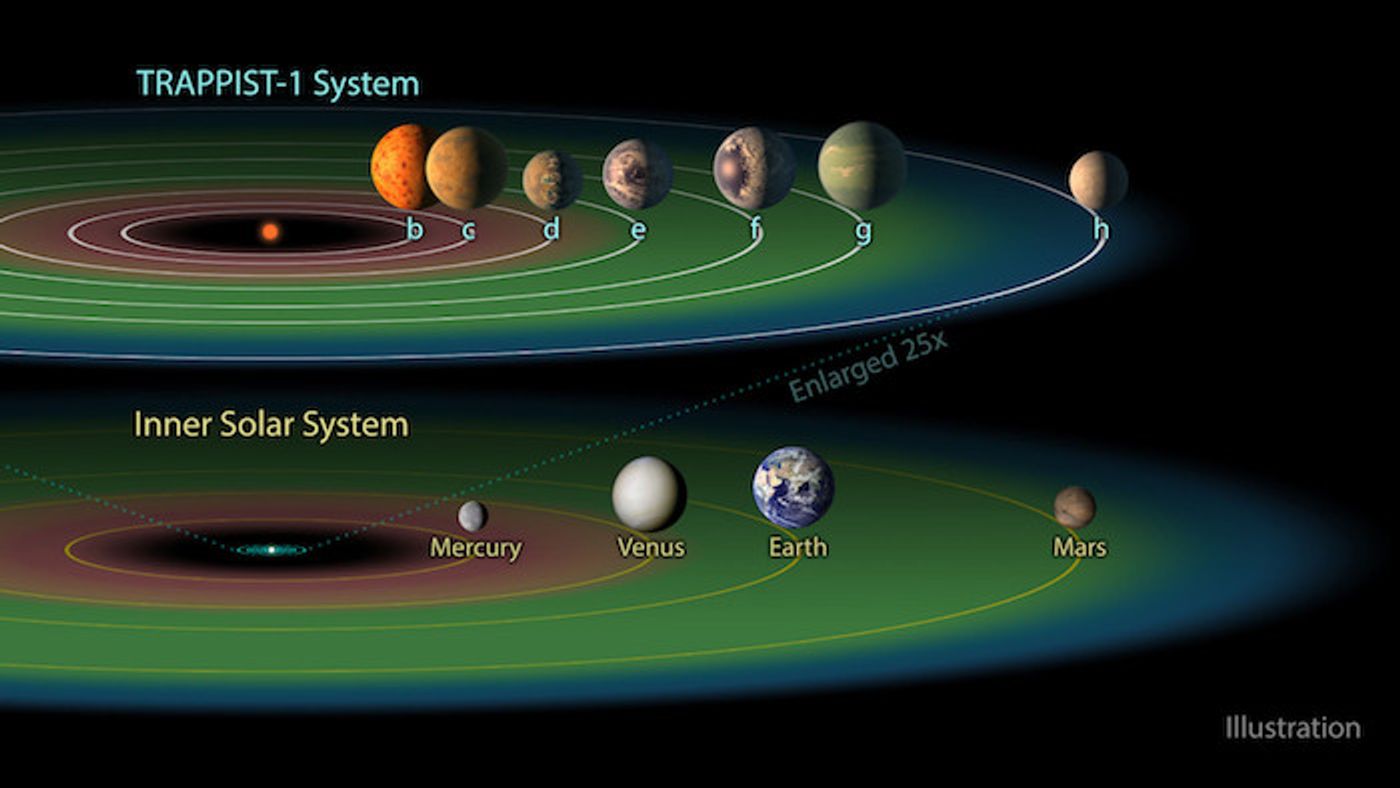Exoplanets in the TRAPPIST-1 System May Have Too Much Water for Life to Exist
The TRAPPIST-1 system made headlines last year when astronomers found not just one, but seven terrestrial Earth-like exoplanets orbiting the red dwarf star at the center. Since this discovery, astronomers have unceasingly probed the system for clues as to whether any of its exoplanets sport habitable conditions.
Image Credit: NASA/JPL-Caltech
With water being one of the key ingredients for life, it just so happens to be one of the primary things astronomers search for when studying distant exoplanets. Those residing in the TRAPPIST-1 system purportedly exist within the host star’s ‘habitable zone,’ and so their conditions should be optimal for water.
At first glance, this may seem like a positive finding, but researchers from both the University of Arizona and Vanderbilt University now suggest that these worlds could have too much water for life to exist on them. They’ve published their findings in the journal Nature Astronomy this week.
“We typically think having liquid water on a planet as a way to start life, since life, as we know it on Earth, is composed mostly of water and requires it to live,” explained Natalie Hinkel, a postdoctoral scholar from Vanderbilt University.
“However, a planet that is a water world, or one that doesn’t have any surface above the water, does not have the important geochemical or elemental cycles that are absolutely necessary for life.”
Related: TRAPPIST-1 appears to be older than initially thought
But wait, doesn’t Earth have a lot of water? Yes, and no. Water covers approximately two-thirds of our planet’s surface, but it only accounts for a mere 0.2% of Earth’s mass. For comparison, computer models suggest that the exoplanets residing in the TRAPPIST-1 system could have water masses that range from 10-50% – that’s significantly more than Earth’s.
Image Credit: NASA Jet Propulsion Laboratory
But where did all that water come from? That's a good question, and the computer models seem to provide a subtle clue.
Related: NASA's Kepler Space Telescope grabs this image of the TRAPPIST-1 system
The researchers noticed that all seven of the exoplanets in the TRAPPIST-1 system exist within the ‘ice line,’ which means that these exoplanets probably formed further away from the host star where ice could safely accrete, and then slowly migrated inward over time.
Given how astronomers are always looking for life elsewhere in the universe, these findings are somewhat significant. They just might tell us that we need to look elsewhere for signs of life, or more importantly, underscore just how unique our little blue planet actually is.
Source: Vanderbilt University










